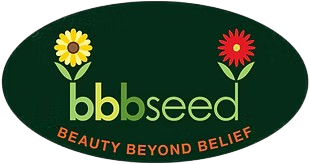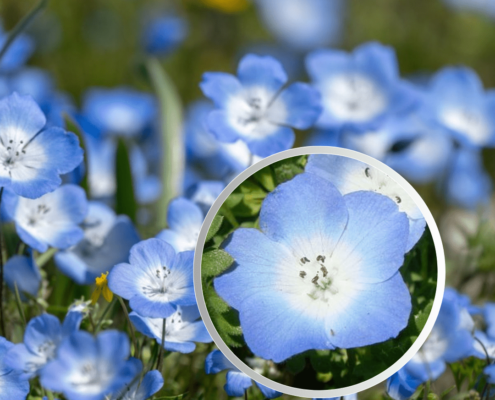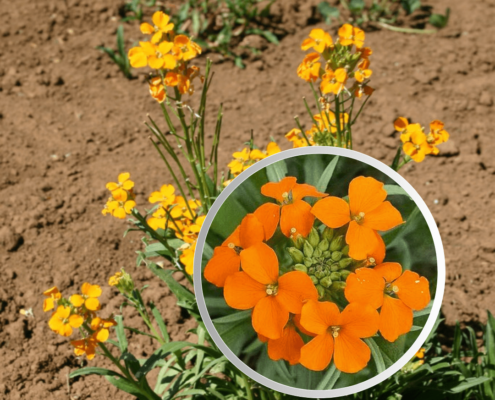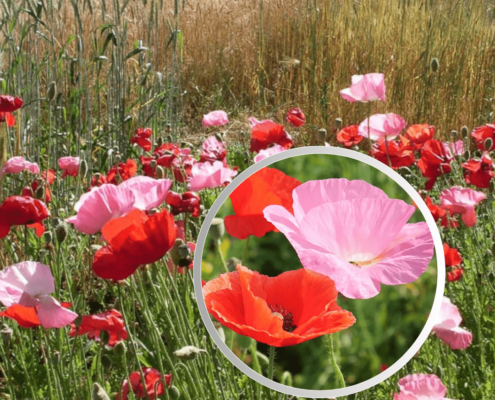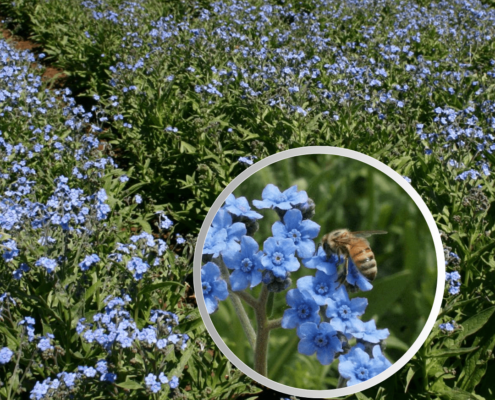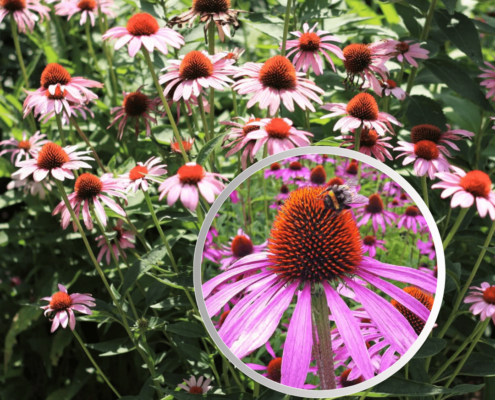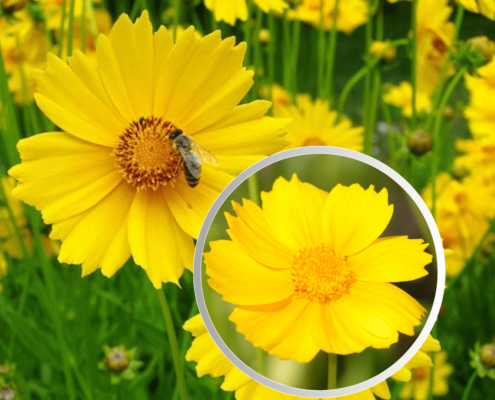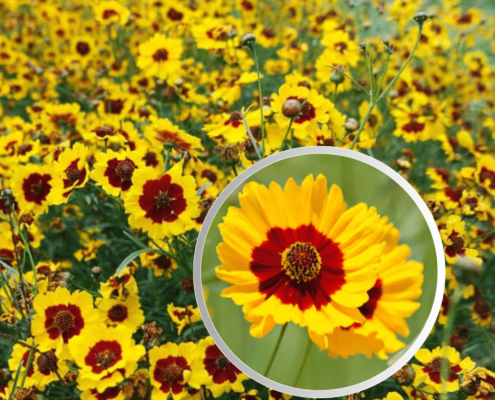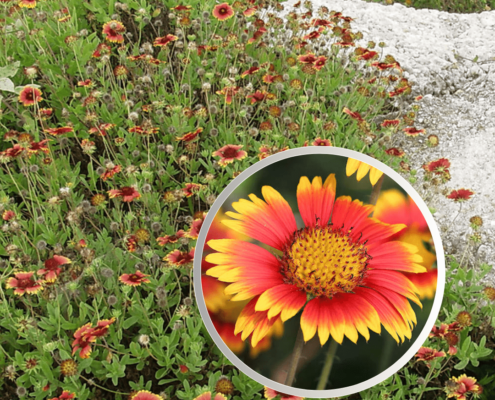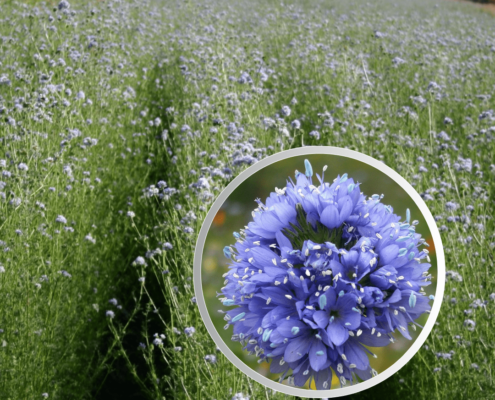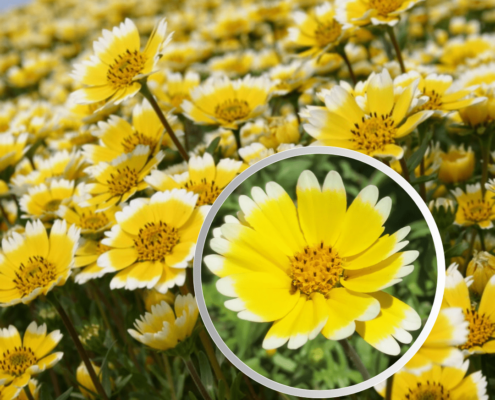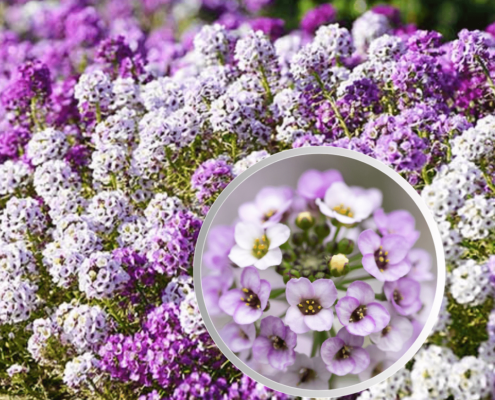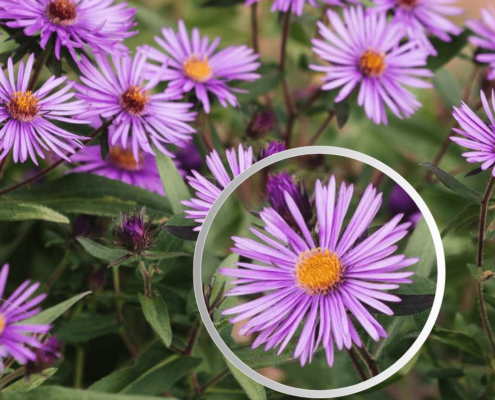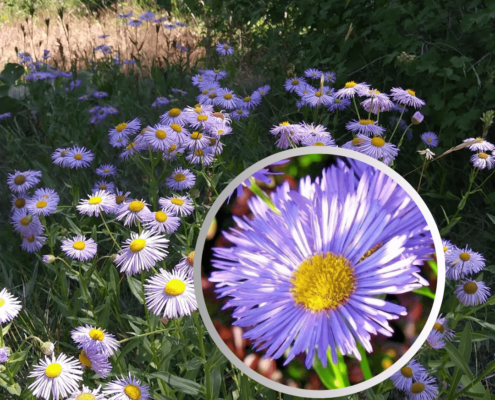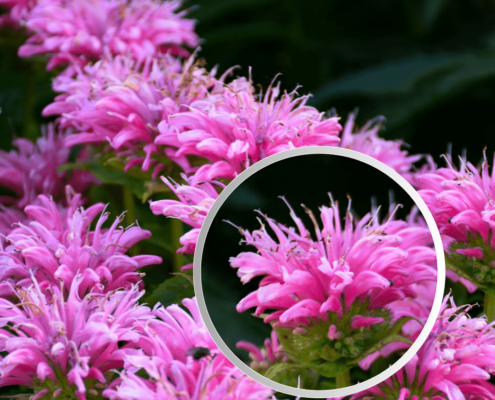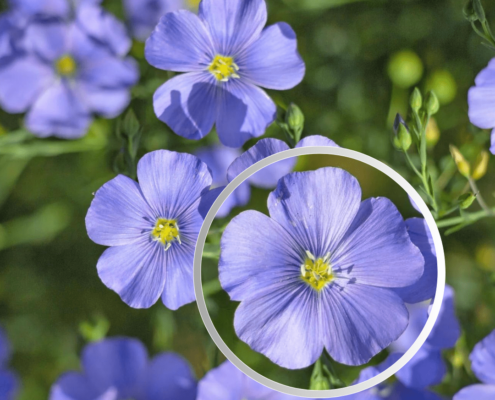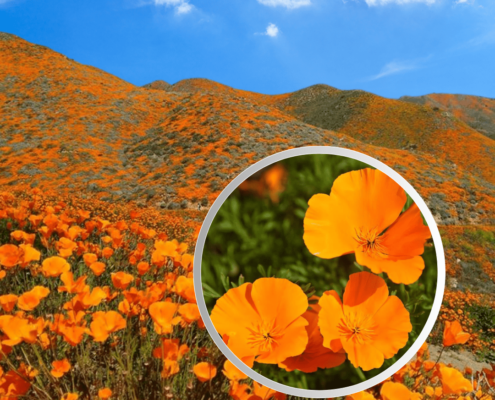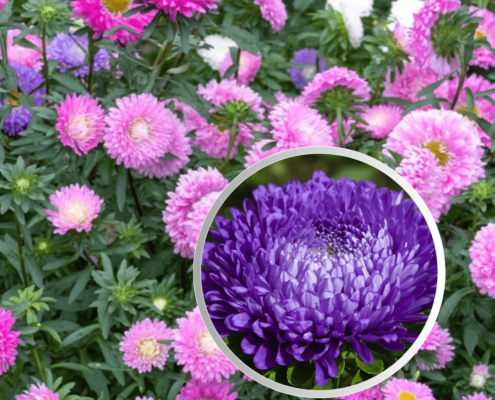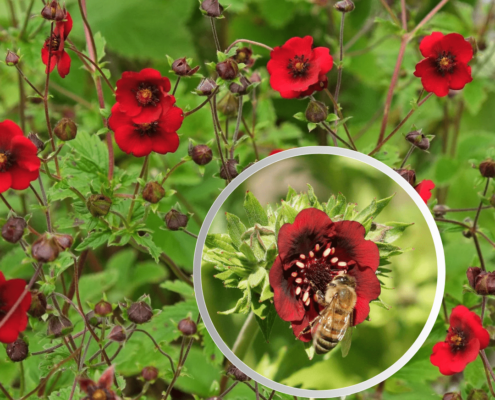The Perfect 19 Plants for Honey Bees – Beekeeper Dream Mix
Bees play a crucial role in our ecosystem by pollinating plants and helping them reproduce. Without bees, many of the fruits, vegetables, and flowers we enjoy would not exist.
Beekeepers and other nature enthusiasts have long recognized the importance of providing a habitat that supports both honey bees and native bees and helps them thrive.
One effective way to attract and support bees is by planting a variety of flowers. In this blog, we will explore the perfect 19 plants for bees that not only benefit bees and contribute to a healthier environment but also make beekeepers happy! Let’s jump in.
Through our extensive work with beekeepers locally and nationwide, BBB Seed has discovered that a varied selection of flowers is essential for attracting and sustaining honey bees.
These plants provide ample nectar and pollen sources, which are essential for the bees’ survival. Whether you are a beekeeper or simply want to help bees thrive in your area, planting a mix of these flowers can make a significant difference.
The Best 19 Plants for Honey Bees
- Baby Blue-Eyes
- Siberian Wallflower
- Mixed Corn Poppies
- Chinese Forget-Me-Not
- Purple Coneflower
- Lance-leaf Coreopsis
- Plains Coreopsis
- Indian Blanket
- Globe Gilia
- Tidy Tips
- Sweet Alyssum
- New England Aster
- Aspen Daisy
- Monarda
- Lavender Hyssop
- Blue Flax
- Orange California Poppy
- China Aster
- Scarlet Cinquefoil
These plants come in a variety of vibrant colors, shapes, and sizes that can enhance the beauty of any garden or landscape. However, their value goes beyond mere aesthetics.
These flowers also play a crucial role in providing essential nutrition for honey bees and native bees and support their overall well-being.
That’s why we have carefully curated a single mixture of these plants, specifically designed to create an ideal environment for bees, which we called Bee Rescue Mix.
Our goal is to make the lives of beekeepers and bee enthusiasts easier, while also promoting the health and vitality of these important pollinators.
The Importance of These Plants for Bees
These specific plants have been carefully selected for their attractiveness to native bees and honey bees. They produce ample amounts of nectar and pollen, which are the main food sources for bees. By planting these flowers, you are creating a diverse and abundant forage environment that helps bees thrive.
How These Plants Boost Honey Production
Honey Bees are not only important for honey production but also play a vital role in pollinating plants.
Pollination helps plants reproduce, ensuring the survival and growth of various ecosystems. In fact, bees are responsible for pollinating one-third of the food crops we rely on.
Without bees, our food system would be severely impacted, leading to a decrease in biodiversity and food shortages.
Additionally, bees contribute to the biodiversity of our ecosystems by enabling plants to reproduce and creating habitats for other wildlife. By planting these honey bee-friendly flowers, you are not only supporting honey production but also helping to restore and enhance the health of your local environment.
The Importance of Bees for the Environment
New grass seed needs a lot of moisture for effective growth. If there’s a lot of rain forecast for your area, then you may need to manually water the seeds yourself. The seeds should receive some water every single day, especially if the area — and most importantly, the soil — isn’t usually damp. Water twice a day for the first few weeks, but be mindful not to overwater. The seeds must stay moist and never dry out.
The Dream Beekeeper Flower Mix for Honey Bees
The Bee Rescue Mix from BBB Seed is the perfect choice for beekeepers, and we will explain why.
This wildflower mix is specifically designed to support the health and vitality of native and introduced bee species.
With a colorful combination of wildflowers, it provides nectar and pollen throughout the entire season which is essential to keep our loved bees happy year-round.
This mix attracts pollinators and is suitable for most growing zones.
By planting this mix, beekeepers can create a food corridor for bees and natives to travel along, helping to combat the decline of honey bees and native pollinators. Additionally, the inclusion of drought-tolerant native plants helps reduce water consumption. With approximately 33,750 seeds per 1oz packet, this mix offers beekeepers an easy and effective way to support their honey bee colonies.
Flowers in Our Bee Rescue Mix
Baby Blue-Eyes
Baby Blue-Eyes is a delicate annual flower with beautiful blue petals and a yellow center. It blooms in early spring and is commonly found in meadows and woodlands.
- Life Cycle: Annual
- Season: Spring
- Light Requirement: Full sun to partial shade
- Soil Moisture: Moist
Siberian Wallflower
Siberian Wallflower is a biennial plant known for its vibrant orange flowers. It has a distinctive fragrance and is often planted in gardens and borders to add color and attract pollinators.
- Life Cycle: Biennial
- Season: Late Spring to Summer
- Light Requirement: Full sun to partial shade
- Soil Moisture: Dry to Average
Mixed Corn Poppies
Mixed Corn Poppies are annual flowers that come in a variety of colors including red, orange, pink, and white. They have large, cup-shaped petals and are commonly found in fields and gardens.
- Life Cycle: Annual
- Season: Spring to Summer
- Light Requirement: Full sun
- Soil Moisture: Dry to Average
Chinese Forget-Me-Not
Chinese Forget-Me-Not is a biennial or perennial flower with delicate clusters of small, blue flowers. It is known for its self-seeding ability, making it a popular choice for wildflower gardens.
- Life Cycle: Annual
- Season: Spring
- Light Requirement: Full sun to partial shade
- Soil Moisture: Moist to Average
Purple Coneflower
Purple Coneflower, also known as Echinacea, is a perennial flower with distinct purple petals and a prominent cone-shaped center. It is often used for its medicinal properties and is a favorite among pollinators.
- Life Cycle: Perennial
- Season: Summer to Fall
- Light Requirement: Full sun to light shade
- Soil Moisture: Moist to dry
Lance-leaf Coreopsis
Lance-leaf Coreopsis is a perennial flower with bright yellow, daisy-like flowers. It is drought-tolerant and easy to grow, making it a popular choice for gardens and landscaping.
- Life Cycle: Perennial
- Season: Summer to Fall
- Light Requirement: Full sun/Part Shade
- Soil Moisture: Average to Dry
Plains Coreopsis
Plains Coreopsis is an annual flower with bright yellow and maroon flowers. It is commonly found in prairies and meadows and is often used for naturalizing and attracting butterflies.
- Life Cycle: Annual
- Season: Summer to Fall
- Light Requirement: Full sun
- Soil Moisture: Average to Dry
Indian Blanket
Indian Blanket, also known as Gaillardia pulchella, is an annual flower with vibrant red and yellow petals. It is native to North America and is commonly found in fields and along roadsides.
- Life Cycle: Annual
- Season: Summer to Fall
- Light Requirement: Full sun
- Soil Moisture: Average to Dry
Globe Gilia
Globe Gilia is an annual wildflower with delicate clusters of small, globe-shaped flowers. It comes in various colors such as blue, purple, and white, and is known for attracting bees and butterflies.
- Life Cycle: Annual
- Season: Spring to Summer
- Light Requirement: Full sun
- Soil Moisture: Average to Dry
Tidy tips
Tidy tips, also known as Layia platyglossa, is an annual flower with white petals and yellow tips. It is native to California and is commonly found in meadows and open areas.
- Life Cycle: Annual
- Season: Spring to Summer
- Light Requirement: Full sun/Part Shade
- Soil Moisture: Average to Dry
Sweet Alyssum
Sweet Alyssum is a low-growing annual flower with clusters of tiny, very fragrant flowers. It comes in various colors including white, pink, and purple and is often used as ground cover or in containers.
- Life Cycle: Annual
- Season: Spring to Summer
- Light Requirement: Full sun to partial shade
- Soil Moisture: Average to Dry
New England Aster
New England Aster is a perennial flower with vibrant purple or pink flowers. It blooms in late summer and is commonly found in prairies and meadows, attracting bees and butterflies.
- Life Cycle: Perennial
- Season: Summer to late Fall
- Light Requirement: Full sun to light shade
- Soil Moisture: Moist to wet
Aspen Daisy
Aspen Daisy, also known as Erigeron speciosus, is a small perennial plant with purple daisy-like flowers. It is native to western North America and is commonly found in rocky slopes and meadows.
- Life Cycle: Perennial
- Season: Summer to Fall
- Light Requirement: Full sun/ Part Shade
- Soil Moisture: Average to Dry
Monarda
Monarda, also known as Bee Balm or Bergamot, is a perennial flower with vibrant, shaggy flowers in shades of red, pink, and purple. It is known for its aromatic foliage and is often used in herb gardens and borders.
- Life Cycle: Perennial
- Season: Summer to fall
- Light Requirement: Full sun to partial shade
- Soil Moisture: Average to Dry
Giant Purple Hyssop
Giant Purple Hyssop is a perennial flower with tall spikes of purple. It has a pleasant, anise-like fragrance and is commonly used in gardens and herbal teas.
- Life Cycle: Perennial
- Season: Summer to Fall
- Light Requirement: Full sun to light shade
- Soil Moisture: Average to Dry
Blue Flax
Blue Flax is a perennial flower with delicate blue flowers. It is native to North America and is commonly found in open fields and prairies.
- Life Cycle: Perennial
- Season: Spring to Summer
- Light Requirement: Full sun
- Soil Moisture: Average to Dry
Orange California Poppy
Orange California Poppy is a perennial flower with bright orange flowers. It is the state flower of California and is known for its resilience and ability to thrive in dry conditions.
- Life Cycle: Annual
- Season: Spring to Fall
- Light Requirement: Full sun
- Soil Moisture: Average to Dry
China Aster
China Aster is an annual or perennial flower with large, showy blooms in various colors including pink, purple, and white. It is commonly used in cut flower arrangements and gardens.
- Life Cycle: Annual
- Season: Summer to Fall
- Light Requirement: Full sun
- Soil Moisture: Average
Scarlet Cinquefoil
Scarlet Cinquefoil is a perennial flower with vibrant red, saucer-shaped flowers. It is native to North America and is commonly found in meadows and open woodlands.
- Life Cycle: Perennial
- Season: Summer to Fall
- Light Requirement: Full sun to light shade
- Soil Moisture: Well-drained
Conclusion
In our experience, we understand that planting a diverse assortment of flowers is essential for attracting and supporting native bees and honey bees.
The perfect 19 plants listed above provide both beekeepers and nature enthusiasts with an excellent range of options to create a vibrant and bee-friendly habitat.
By doing so, we can help ensure the well-being of pollinators, native bees, honey bees, promote honey production, and contribute to a healthier environment for all.
